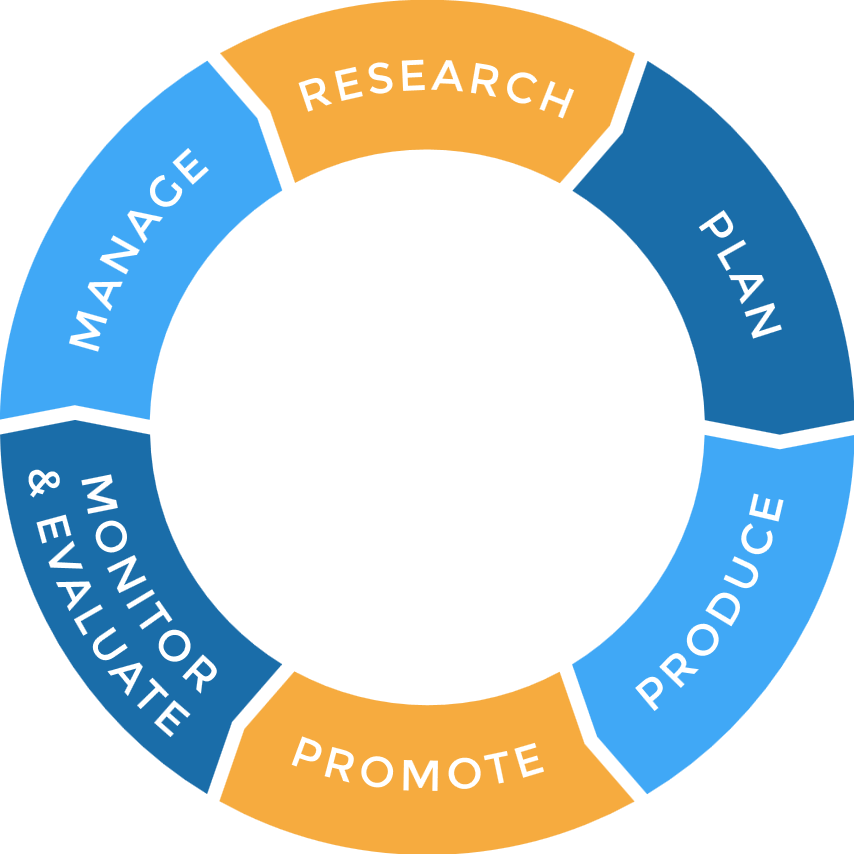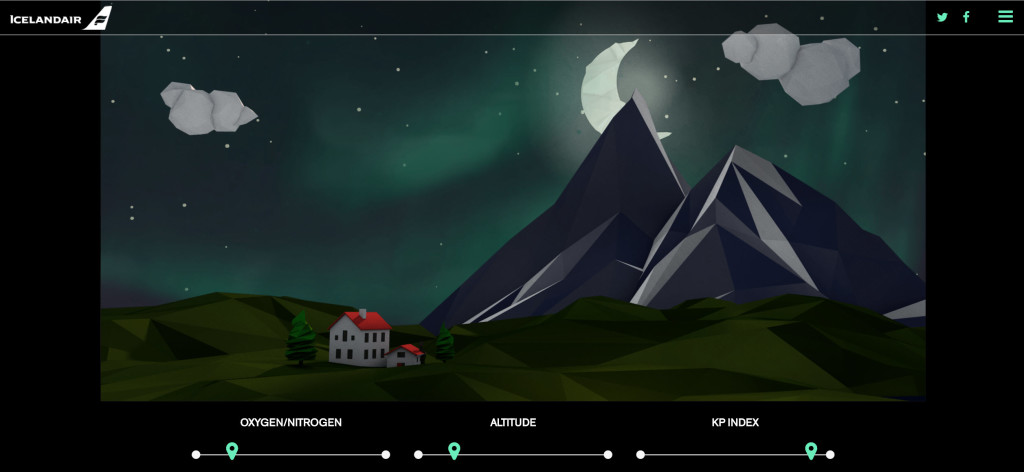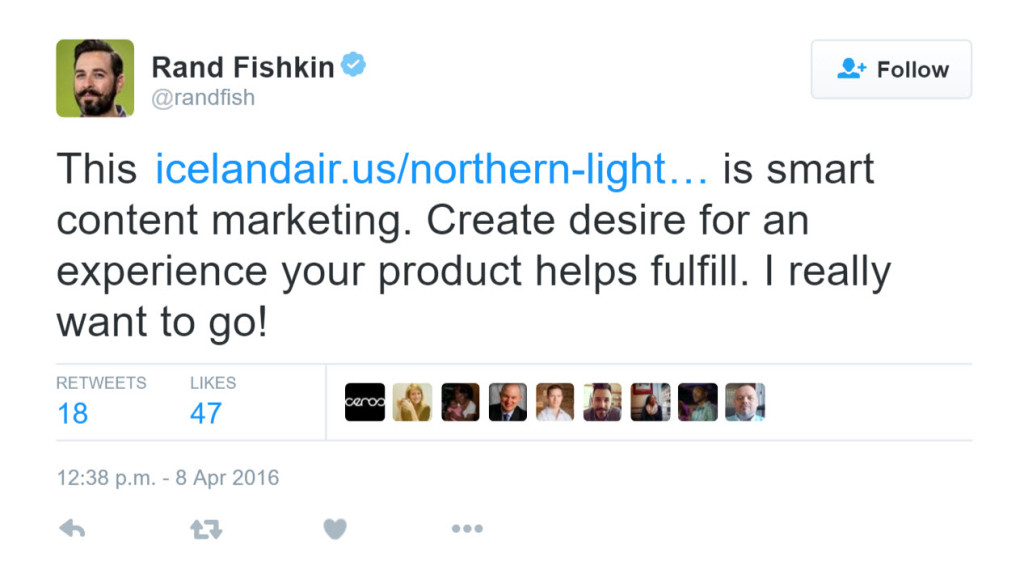Relying on links as the KPI is not reconcilable to any business performance metric
Firstly, clients who are purchasing content with SEO objectives in mind (any type of medium from an infographic to an interactive experience) tend to rely on KPI’s that might focus solely on metrics such as link volume, shares on social networks and so on.
This has all sorts of uncomfortable side effects.
- That it’s actually very easy to garner performance metrics directly to the URL of the content itself but hard to direct any of those benefits into revenue generating pages on site (except, perhaps for the home page). The links acquired might be beneficial for search, but might not be relevant to the purpose of the actual business.
- The agency is treated like a production outfit when in fact we have strategic expertise that far outstretches producing single pieces of content for links and SEO purposes.
- Over time it becomes gradually more difficult to steer the conversation towards real business outcomes which content marketing can absolutely achieve.
- Running a campaign for any meaningful amount of time (6 – 12 months) is a difficult sell because the primary objectives set don’t encourage the need for campaign planning.
Furthermore it’s getting harder to justify the long term value in SEO orientated content marketing.
The problem: it’s an SEO centric approach not a customer centric strategy. You have to provide uniquely relevant content that performs a useful function.
Challenging conventions
Unfortunately, the convention of content for links and secondary metrics can be difficult to challenge, especially in larger organisations where the mechanics of success measurement are baked in, all the way up the management reporting structure.
This convention prolongs the core issue: your organisation might believe its marketing goal should be “create content for links”. Meanwhile, it’s ignoring the value content strategy can add throughout the buyer’s journey while delivering meaningful business outcomes:
- Awareness of the product, service or brand
- Communication of the (unique) features and benefits of the brand or service
- Product sales, revenue or other conversions
- The opportunity to establish and communicate brand message or core values
- Audience growth via email subscriptions, social followings
- Referrals from news, partnerships, related sites or content curation
- Strong customer retention and repeat sales
- Minimising refunds, returns or other negative implications of miss-set expectations
Put simply, don’t confuse link building goals with content marketing goals
Link acquisition deployed carefully is still an important tactic to boost the individual ranking performance of pages in organic search. Though this activity shouldn’t be confused with the goal selection process for your content marketing efforts.
Providing that an item of content fully answers a user need in a search engine friendly way, the right promotion can achieve a variety of primary goals with links as the validating secondary outcome.
How we market Builtvisible
When I think about the marketing we do for Builtvisible today, none of it involves directly attempting to build links.
Our success metrics revolve around the lead generation capability of the site. In its simplest form; top of funnel growth is achieved via our blog and guides. The awareness garnered earlier in the funnel is converted from our home and services pages. Obviously word of mouth, referrals and positive mentions all play their role, but eventually, someone emails, calls or uses our contact form.
Our lead generation performance in Google is obviously a part consequence of our content attracting links but, I’d argue that is a product of learning what our audience likes to read. Then, we write for that. Our audience votes with positive mentions and shares.
What we’re not doing: learning what people link to and creating content to achieve that.
What we’re doing: learning what people love, creating the best content we can write and promoting in the right places.
Content, just not for links
In the end though, we’re still talking about the same thing: content, just not for links.
When you’re getting to know a new client, the conversation doesn’t start with “how many links will you need?”, it starts like this:
- Why does this business exist?
- What makes them unique?
- What are their goals and KPIs?
Internally, we’ve begun this discussion as a way to cut to the core of our customer’s requirements:
How is our client’s performance measured? What will get them a payrise at work?
Based on what we learn, the “drive-by” content strategy can be derived from answering:
- What problem(s) are you trying to solve?
- What message(s) are you trying to communicate?
How to get started
Steven wrote an exceptional introduction to content strategy for SMEs. I highly recommend you take his process into account: create personas, nail your voice and tone, ideate early concepts, plan a calendar and always have clear goals defined.
I think Steven’s approach for resource or budget thin marketing teams is an excellent starting point.

Image Source: An Introductory Guide to Content Marketing
As soon as you’re ready to graduate, the process at Enterprise scale can go much deeper. Take a look at our introductory guide to content marketing or the process outlined below:
Kick Off: Phase 1
Start by:
- Assessing the business objective(s)
- Assess which stage(s) of the conversion funnel you can focus on
- Modelling the metrics: inputs required to achieve outcome
- Defining broad solutions
- Assess project feasibility
- Carrying out initial audience research
- Prioritise
- Specify testing procedure
- Communicate proposed approach, possible solutions and goals
Phase 2: Production
Production activities might include
- Initial ideation*
- Architecture of central theme(s) and message(s)
- Define voice and tone
- Architect Your Central Themes and Messages
- Develop a Content and Social Calendar
- Develop Your Flagship Content
- De-construct large assets into bite size chunks for secondary social channel promotion
*To learn more about how we approach the ideation phase, take a look at our ideas that work in content series or the web marketer’s guide to Reddit.
Key considerations
What format must your content take to achieve this goal?
You need to choose the format of your content very carefully. The medium you use will dictate how effectively the content spreads on the channel. Knowing what works well on Facebook probably won’t help you unpick the format you’ll need to use to promote something on Twitter or Instagram.
How can your content be repurposed to fit into a campaign that might work on different channels?
Repurposing content for budget constraints or campaign longevity is a subject Steven covered a few weeks ago. Content comes in a wide variety of formats.
The trick for a really effective campaign is knowing how to make each item of content more appropriate for the channel it’s destined for:

Greenpeace’s Instagram, Facebook, Energy Desk blog and Twitter profile
What promotional strategy would work best to achieve your goals?
This is part of a forthcoming blog post, because it’s huge. For now, remember what you’re trying to achieve; the placement of a message in front of exactly the right audience. On that note I’ve always been a believer in organic exposure through the use of really targeted outreach.
Choose your paid and organic promotional placement wisely:
- Outreach targets based on audience profiling
- Journalist / editorial targets
- Individual influencer targets
Measurement
Performance measurement is a critical component of our iterative, phase based content marketing campaigns.
Analytics dashboard construction will be unique in some ways to the client and our agreed objectives. For example; Builtvisible has a dashboard setup that looks at surface performance metrics such as traffic, time on site and so on. We even look at AMP pages in a separate dashboard view.
Content is grouped by types such as blog posts, guides and services:

And then we measure outcomes such as:
- Total email / contact enquiries
- Total newsletter signups
- Top Pages by Enquiries Driven
- Top Pages by Newsletter Signups
- Top Acquisition Sources by Enquiries Driven
- Top Landing Pages by Enquiries Driven
And so on. The beginnings of a measurable content marketing strategy.
Of course, none of this gets you off the hook when it comes to link building.
When links *are* the correct metric
For now, link building is definitely part of the SEO process. It’s just that separating “content marketing” from SEO opens up a broad horizon of business goals. And, it makes choosing them, measuring them and applying attribution well so much easier.
Some companies need to maintain high converting organic traffic by ranking highly for individual groups of commercial keywords. This is when savvy, careful management of a domain’s link profile link building and link auditing and removal) comes into play.
To execute a fully effective digital campaign though, we should get comfortable with separate content marketing and SEO goals.



Danny AShton
The challenge with pure content marketing is that it take a really long time to provide ROI, Mark Schaefer
estimated between 4-5 years. It always takes a long time to achieve a reliable “reach” so a business is then able to create content that only needs support from their owned media.
I am sure there will a time when the only way to push a brands sites in the SERP’s is through content marketing approach but we are not there yet and likely won’t for a number of years.
I still see links and social as the best metric of how the real people view the content.
Getting a real link is still the highest accolade for a piece of content and as of today is the main driver for search visibility for a domain.
Content that does not earn links and social will just sit on a site looking pretty. If you have a big ad budget to support it, then maybe you can make it earn its keep -but if that is the case, we have moved into the realms of native advertising.
Right now I wouldn’t recommend a pure content marketing approach for clients unless you have buy-in from the entire team and everyone is happy to wait 5 years for a return and don’t mind learning a lot along the way. I would also suggest that many agencies are still in this boat, considering content marketing only arrived in 2013.
Although I totally agree that content should do more than attract links:
6 months ago we added a content-giveaway to our interactive infographic – https://neomam.com/interactive/13reasons/ it has since added 4K+ subscribers to our list, but this content still had to earn the links and social share reach first, which means it is consistently attracting 4,000 people per week even 2 years after it went live.
Richard Baxter
Hi Danny,
Thanks very much for your thoughtful comment.
I disagree with the basic assertion you made that CM ROI takes 4-5 years to prove itself. That’s utterly insane: a well researched campaign targets customers at every stage of user intent, the decision funnel, from growth to additional sales and retention, capitalising on quick wins in the long tail of search while making space and time for the bigger pieces. Achieving faster ROI and traffic growth is simply a function of a well executed project plan and an agency with plenty of resource to get the job done.
When you said: “I am sure there will a time when the only way to push a brands sites in the SERP’s is through content marketing approach but we are not there yet and likely won’t for a number of years.” this implies that either it’s one tactic or the other in your mind and not a carefully considered balance of strategically led content development, content marketing, link building, PR and outreach. Surely not?
Thanks for the food for thought!
Richard
PS: pretty sure content marketing was an already an establishing specialism in 2006/7 – see Joe Pulizzi / https://contentmarketinginstitute.com/about/
Danny Ashton
It will be interesting to see how the role of an agency adjusts to this new world.
I can’t see a time when an agency will have the required understanding of a client’s brand, mission, product, goals, culture, structure and business plan to provide significant value outside of the awareness stage. Agencies by their very nature work with lots of different brands and have a limited time for each client.
Most agencies have a hard time understanding the consideration/decision/retention stages of their businesses, never mind the large number of clients they work with.
However, agencies are extremely powerful at the awareness stage. They can see how the brand is viewed externally without the curse of knowledge suffered by most clients and can quickly spot opportunities to connect pre-existing audiences to the brand. Content agencies working across many industries and clients are learning what makes audiences tick and can quickly apply learnings across their entire client base.
Thanks for an interesting debate!
Richard Baxter
“I can’t see a time when an agency will have the required understanding of a client’s brand, mission, product, goals, culture, structure and business plan to provide significant value outside of the awareness stage.”
Much of that required understanding happens at the onboarding stage for clients of BV. We get to know our client, their purpose and goals. We then set goals at a range of different consideration phases and take revenue, traffic growth / conversion kpis happily.